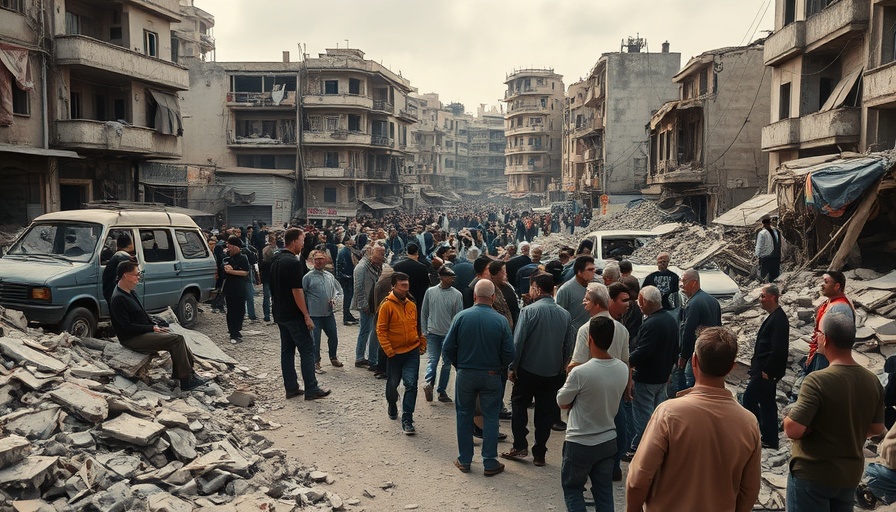
Escalating Violence: A Grim Overview of Gaza’s Situation
In a troubling turn of events, recent airstrikes in Gaza City have resulted in a tragic loss of life, with reports stating that over 17 individuals were killed, just a day after Israel halted its daily pauses that were intended to allow humanitarian aid to reach those in desperate need. This escalation highlights the ongoing complexities and tragedies of the conflict between Israel and Hamas, marking yet another dark chapter in the region's history.
The Impact of Ceasing Aid Pauses on the Civilian Population
Humanitarian efforts in Gaza have been severely impacted by the cessation of these pauses. Relief organizations have warned that without the ability to deliver essential supplies and assistance, the already dire circumstances for civilians in Gaza would only worsen. Over 2 million people rely on international aid, and disruptions could lead to unimaginable consequences, further exacerbating the humanitarian crisis.
Targeted Strikes: The Case of Abu Obeida
One of the strikes aimed to eliminate Abu Obeida, a prominent figure within Hamas, known for his vocal presence against Israel. This tactic of targeting key militant figures raises questions about the efficacy and morality of such military operations amidst a civilian population. While Israeli authorities argue that eliminating key militants is crucial for national security, critics assert that such actions risk civilian lives and perpetuate cycles of violence.
Current Events and International Reactions
The world watches closely as these events unfold. International actors have expressed concern regarding the rising death toll and the humanitarian implications of the continued conflict. As calls for de-escalation grow louder, the leadership and responsiveness from both Israeli officials and Palestinian authorities will play a pivotal role in shaping future outcomes.
Future Insights: Potential Outcomes of Continued Conflict
Looking forward, if violence escalates further, the potential for wider regional instability looms large. Experts predict that failing to reach any form of peace may result in a steep rise in radicalization among the youth in Gaza and disconnect in the peace talks. Without significant international pressure, the cycle of violence could repeat, leading to recurrent tragedies.
Understanding Human Emotions Amidst Conflict
For many civilians in conflict zones, the toll is not just counted in deaths and injuries but also in psychological scars and loss of hope. Families losing loved ones or homes face undeniable trauma that can affect generations. Bringing attention to these narratives is crucial for fostering empathy and understanding in a world too often desensitized to violence.
Confronting myths: Misunderstandings in the Israeli-Palestinian Conflict
Amidst the discussions, it is essential to address common misconceptions about the Israeli-Palestinian conflict. Many assume that it is solely a territorial dispute, while it encompasses deeper historical, emotional, and socio-economic layers that contribute to the ongoing strife. Exploring these complexities helps to paint a clearer picture of the motivations and grievances on both sides, fostering a more nuanced understanding of the conflict.
Conclusion: The Need for Immediate Action and Resolution
As events in Gaza continue to unfold, it is crucial for the international community to advocate for immediate ceasefire initiatives and to support humanitarian aid efforts. Understanding the layered history and the pressing needs of the civilian population can drive essential dialogue that may pave the way for a more resilient peace process.
 Add Row
Add Row  Add
Add 




Write A Comment